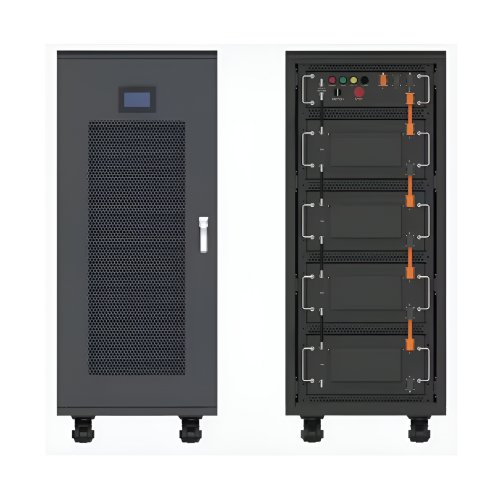How To Use Charging Guidelines: Maximizing Battery Health And Device Longevity
Proper charging practices are fundamental to extending the life of your electronic devices, from smartphones and laptops to electric vehicles and wireless earbuds. Misconceptions about battery care are widespread, often leading to premature degradation. This guide provides comprehensive charging guidelines, offering actionable steps, expert tips, and crucial precautions to help you optimize battery performance and ensure your devices remain healthy for years to come.
Understanding Battery Basics: Lithium-Ion Technology
Most modern devices use Lithium-ion (Li-ion) batteries. Unlike older battery technologies, Li-ion batteries thrive on partial, regular discharges rather than being fully drained and then fully recharged. Their lifespan is measured in charge cycles (one cycle equals a 100% discharge, whether done all at once or in smaller increments over time). The primary enemies of a Li-ion battery are extreme heat, extreme cold, and being consistently held at a 100% charge level.
Detailed Steps for Optimal Charging
Adopting a mindful charging routine is simpler than it seems. Follow these steps to integrate best practices into your daily life.
1. The Partial Charge Habit: Aim to keep your battery level between 20% and 80% for daily use. There is no need to consistently charge it to 100%. Plugging in your device when it drops to around 40-50% and unplugging once it reaches 80-90% is ideal. This reduces stress on the battery, significantly slowing its chemical aging process.
2. Avoid Deep Discharges: While modern devices have safeguards, frequently letting your battery drain to 0% is highly detrimental. Deep discharges strain the battery's internal chemistry. If your device does power off due to a low battery, charge it again as soon as possible.
3. Utilize Optimized Charging Features: Both Apple (iOS 13 and later) and Android (various manufacturers) offer built-in battery management features. For instance, Apple's "Optimized Battery Charging" learns your daily routine and waits to finish charging past 80% until you need to use it. Ensure these features are enabled in your device's battery settings.
4. Unplug Once Charged: For overnight charging, using optimized charging features helps. However, if you are charging during the day, make a habit of unplugging the device once it reaches your desired level. Leaving it plugged in indefinitely, especially at 100%, keeps the battery under high voltage stress, which accelerates capacity loss.
5. Use the Right Charger: Always use a charger and cable that are certified by your device's manufacturer or a reputable third-party brand. Using cheap, uncertified chargers can lead to inconsistent power delivery, excessive heat generation, and potential damage to the battery's management system.
Pro Tips and TechniquesThe 40-80 Rule: For those who want to maximize battery lifespan above all else, strictly maintaining a charge between 40% and 80% is the gold standard. This is especially useful for devices you plan to keep for many years.Occasional Full Calibration: The battery percentage indicator can sometimes become inaccurate. If you notice erratic readings, manufacturers occasionally recommend performing a full calibration: drain the battery to 0% until it shuts down, then charge it uninterrupted to 100%. This should be done no more than once every three months.Mind the Environment: Never charge your device in direct sunlight, on a soft surface like a bed or pillow, or in a hot car. Heat is a battery's worst enemy. Charge on a hard, cool, and well-ventilated surface.Long-Term Storage: If you plan to store a device for an extended period, do not leave it fully charged or fully drained. The ideal state for storage is a charge level of around 50% in a cool, dry environment.
Critical Precautions and Safety Notes
Safety should always be the highest priority when dealing with electronics and electricity.
1. Beware of Extreme Temperatures: Never charge a device that is extremely hot or cold. If your phone overheats from use or a cold winter day, allow it to return to room temperature before plugging it in. Charging in extreme temperatures can cause permanent damage and poses a safety risk.
2. Inspect Cables and Ports: Regularly check your charging cables for fraying, breaks, or kinks. Examine the device's charging port for an accumulation of lint or debris, which can cause poor connection and overheating. Clean ports carefully with a non-metallic tool.
3. Avoid "Trickle Charging" from Computers: While convenient, charging a power-intensive device like a tablet or laptop from a standard USB-A port on a computer often provides a very weak current. This can cause the device to charge extremely slowly and may even discharge during use, putting the battery in a stressful state of constant mini-cycles.
4. Listen to Your Device: If your device, charger, or cable becomes unusually hot during charging, unplug it immediately. A warm charger is normal, but excessive heat is a warning sign. Similarly, if the device is bulging or deformed, stop using it and seek professional help.
5. Prioritize Safety-Certified Products: Always purchase chargers and power banks that have passed international safety standards (look for CE, UL, or RoHS markings). Cheap, uncertified alternatives are a common cause of fires and device failures.
By integrating these charging guidelines into your routine, you transition from a user who simply powers a device to a custodian who actively preserves it. This proactive approach not only saves you money on premature replacements and battery services but also ensures your devices remain reliable, safe, and performant throughout their entire intended lifespan.
Customized/OEM/ODM Service
HomSolar Supports Lifepo4 battery pack customization/OEM/ODM service, welcome to contact us and tell us your needs.


HomSolar: Your One-stop LiFePO4 Battery Pack & ESS Solution Manufacturer
Our line of LiFePO4 (LFP) batteries offer a solution to demanding applications that require a lighter weight, longer life, and higher capacity battery. Features include advanced battery management systems (BMS), Bluetooth® communication and active intelligent monitoring.

Customised Lithium Iron Phosphate Battery Casing
ABS plastic housing, aluminium housing, stainless steel housing and iron housing are available, and can also be designed and customised according to your needs.

HomSolar Smart BMS
Intelligent Battery Management System for HomSolar Energy Storage System. Bluetooth, temperature sensor, LCD display, CAN interface, UART interface also available.


Terminals & Plugs Can Be Customized
A wide range of terminals and plugs can be customised to suit the application needs of your battery products.

Well-designed Solutions for Energy Storage Systems
We will design the perfect energy storage system solution according to your needs, so that you can easily solve the specific industry applications of battery products.



About Our Battery Cells
Our energy storage system products use brand new grade A LiFePO4 cells with a battery lifespan of more than 4,000 charge/discharge cycles.



Applications in Different Industries
We supply customized & OEM battery pack, assemble cells with wiring, fuse and plastic cover, all the cell wires connected to PCB plug or built BMS.
Applications: E-bike, Electric Scooter, Golf Carts, RV, Electric Wheelchair, Electric Tools, Robot Cleaner, Robot Sweeper, Solar Energy Storage System, Emergency Light, Solar Power Light, Medical Equipment, UPS Backup Power Supply.
We can provide you with customized services. We have the ability to provide a vertical supply chain, from single cells to pack/module and to a complete power solution with BMS, etc.


HomSolar (Shenzhen) Technology Co., Ltd
























